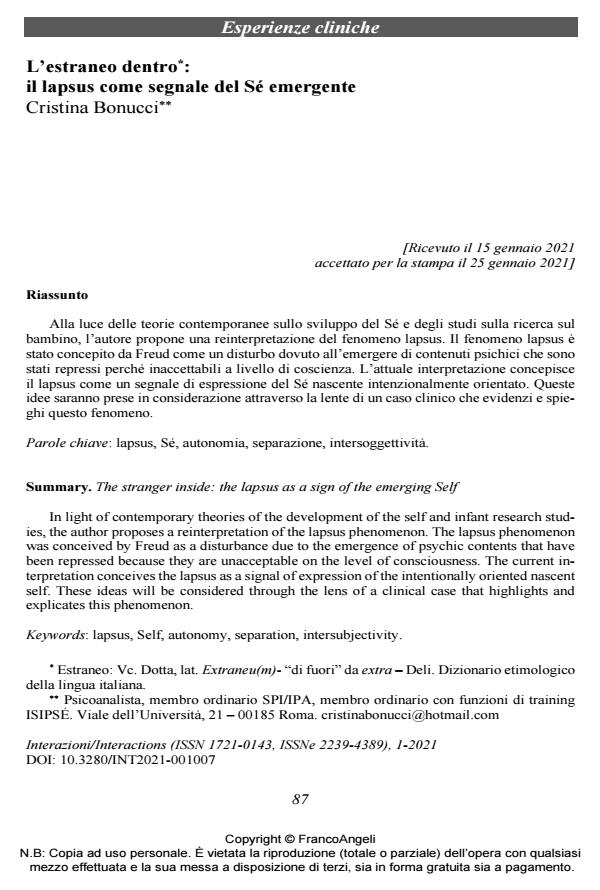The stranger inside: the lapsus as a sign of the emerging Self
Journal title INTERAZIONI
Author/s Cristina Bonucci
Publishing Year 2021 Issue 2021/1
Language Italian Pages 13 P. 87-99 File size 206 KB
DOI 10.3280/INT2021-001007
DOI is like a bar code for intellectual property: to have more infomation
click here
Below, you can see the article first page
If you want to buy this article in PDF format, you can do it, following the instructions to buy download credits

FrancoAngeli is member of Publishers International Linking Association, Inc (PILA), a not-for-profit association which run the CrossRef service enabling links to and from online scholarly content.
In light of contemporary theories of the development of the self and infant research stud-ies, the author proposes a reinterpretation of the lapsus phenomenon. The lapsus phenomenon was conceived by Freud as a disturbance due to the emergence of psychic contents that have been repressed because they are unacceptable on the level of consciousness. The current inter-pretation conceives the lapsus as a signal of expression of the intentionally oriented nascent self. These ideas will be considered through the lens of a clinical case that highlights and ex-plicates this phenomenon.
Keywords: Lapsus, Self, autonomy, separation, intersubjectivity.
Cristina Bonucci, L’estraneo dentro: il lapsus come segnale del Sé emergente in "INTERAZIONI" 1/2021, pp 87-99, DOI: 10.3280/INT2021-001007